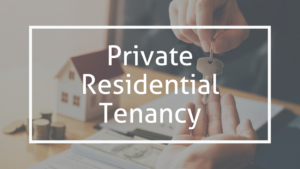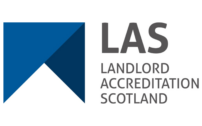Private Residential Tenancy. Everything you need to know
The Private Residential Tenancy (PRT) is an essential part of letting in Scotland. All landlords and letting agents operating in Scotland should have a comprehensive understanding of creating and managing a Private Residential Tenancy.
We offer several full and comprehensive webinars on the Private Residential Tenancy at various stages. From the creation of a PRT, to changes during the tenancy and finally ending a tenancy, our team of expert tutors are on hand to help with your understanding of the topic. Below you will find a quick guide and factsheet about the PRT, however for a more in depth look at a particular stage of the tenancy, please see one of our webinars below.

The Private Residential Tenancy came into effect in December 2017, replacing the old Short Assured Tenancy. The PRT must now be used for all new tenancies and has some major changes and updates.
Key among these updates are the following:
- All private residential tenancies are open-ended. This means a landlord can no longer simply ask their tenant to leave once the fixed term has ended.
- The PRT also provides more stable and predictable rents. It includes protection against excessive rent increases
- A PRT includes the ability to introduce local rent caps in high pressure rent areas.
- Finally the PRT provides comprehensive and robust grounds for repossession. This allows landlords to regain possession in 18 specified circumstances
How the Private Residential Tenancy Benefits Landlords
As with all changes to key legislation, a change can be quite worrying. However the private residential tenancy fixed many issues with the short assured tenancy and brought with it some key benefits for landlords. To name a few:
- Eighteen new and modernised grounds of repossession have been included in the new private residential tenancy.
- Confusing pre tenancy notices like the AT5 have been removed, meaning less stress in the pre tenancy process.
- A tenant who has fallen into arrears is much easier to handle under the PRT. This allows a landlord to refer the case to repossess much more quickly.
- The Scottish Government have created a ‘model PRT’, which includes standardised mandatory and discretionary tenancy terms for simple use based on your property and rental situation.
How the Private Residential Tenancy Benefits Tenants
The PRT also brought some considerable improvements for tenants. Among the protection and benefits offered are the following:
- Rent increase protection. Rent can only be increased once per year and a tenant is afforded 3 months notice of any increases. Rent increases may also be referred to a rent increase officer to judge whether the increase is fair
- The PRT is open ended, and so a landlord cannot ask a tenant to leave simply because their term has ended.
- If a tenant has lived in a property for more than six months, they must be given 84 days notice before leaving the property. They are also afforded the right to apply to the First Tier tribunal for wrongful termination.
PRT Resources
The Scottish Government website contains a host of beneficial resources and guides to help you brush up on all the workings of a PRT. For a more in depth guide to the PRT, consider our webinars. Our tutors will take you through the legislation behind the agreement as well as any changes to legislation and best practice. You’ll also have the opportunity to ask your questions to our expert team of tutors.
